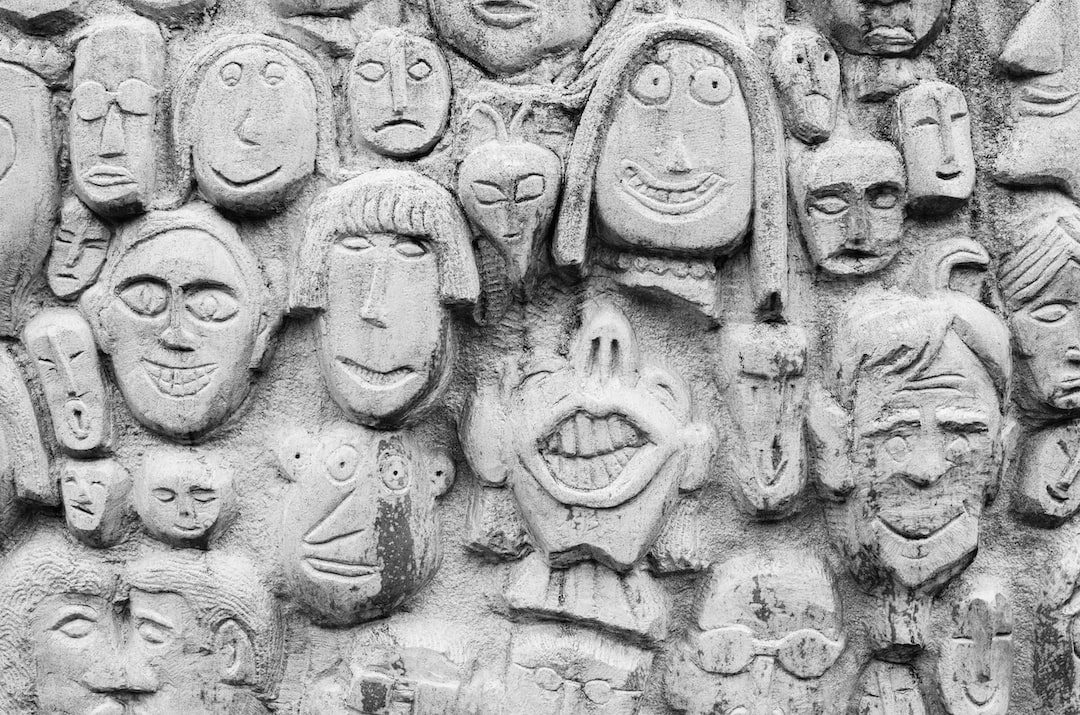If you’re wondering about how many calories in meatloaf, you’re not alone.
This classic comfort food is a favorite for many, but it’s important to know the calorie content for those watching their intake.
The number of calories in meatloaf can vary depending on the recipe and ingredients used, but we’ve got all the information you need to enjoy this hearty meal without the guilt.
Let’s take a closer look at the calorie count in meatloaf and how you can make it a healthy addition to your diet.
- Meatloaf can contain varying degrees of calories depending on how it’s made and what ingredients are used.
- Ground beef is the main ingredient in meatloaf and has a caloric value of about 250-300 calories per 100 grams.
- Other ingredients in meatloaf, such as bread crumbs, onions, and eggs, also contribute to the calorie count.
- Adding high-fat ingredients like bacon or fatty cuts of meat can significantly increase the calorie count.
- On average, a slice of meatloaf could contain around 350-500 calories.
Importance of Counting Calories in Meatloaf Recipes
Counting calories can be an essential component of maintaining a healthy diet.
This is particularly important when it comes to meatloaf recipes.
Meatloaf, a popular comfort food dish, is often high in fat and calories.
To ensure that you are not overindulging, it’s essential to keep track of the calories in your meatloaf recipe.
One of the simplest ways to count calories in meatloaf recipes is to measure each ingredient and log its calorie count.
This is especially important when dealing with ingredients such as ground beef, which can be deceptive in terms of calorie content.
For example, a 3-ounce serving of regular ground beef has 250 calories, while 3 ounces of lean ground beef has only 184 calories.
By measuring and logging the amount of ground beef used in your meatloaf recipe, you can accurately calculate the total calorie count.
Another important factor to consider when counting calories in meatloaf recipes is portion control.
It’s easy to overindulge in this hearty dish, so it’s important to keep an eye on your portion sizes.
A serving of meatloaf should be around 3-4 ounces, which equates to around 300-400 calories.
By keeping an eye on your portion sizes, you can ensure that you are not overeating and consuming more calories than you need.
Substituting ingredients is also a great way to reduce calorie content in your meatloaf recipes.
For instance, replacing high-fat ground beef with lean ground turkey or chicken can significantly reduce the total calorie count of the dish.
Similarly, using rolled oats or finely chopped vegetables as a binder instead of high-calorie breadcrumbs can also help to cut down on calories.
In conclusion, counting calories in meatloaf recipes is crucial for maintaining a healthy diet.
By accurately measuring and tracking the calorie content of each ingredient, controlling portion sizes, and making ingredient substitutions, you can enjoy this comfort food dish without the guilt.
So, next time you’re preparing meatloaf, be sure to keep these tips in mind for a healthier and more delicious meal.
Meatloaf Variations and Calorie Differences
When it comes to meatloaf, there are plenty of variations to choose from.
Whether it’s a classic recipe or a modern twist, this comfort food is always a crowd-pleaser.
But did you know that the calorie count can vary significantly depending on what ingredients you use? Here are some tips to make sure your meatloaf is as delicious as it is healthy.
1) Choose Lean Meat: When selecting meat, opt for lean ground beef or turkey instead of ones with high-fat content.
While adding breadcrumbs or oatmeal to your meat can help cut down on fat, using lean meat as your base significantly reduces the calorie count.
2) Load up on Vegetables: To add flavor and nutrition to your meatloaf, consider including diced vegetables such as onions, bell peppers, and carrots.
These vegetables are low in calories but high in fiber and vitamins.
They also add moisture to your meatloaf, keeping it from becoming dry and bland.
3) Swap out High-Calorie Ingredients: One way to reduce the calorie count in your meatloaf is to swap out high-calorie ingredients for healthier alternatives.
For example, instead of using regular bacon, try using Canadian bacon or turkey bacon.
For a binding agent, replace eggs with unsweetened applesauce or mashed bananas.
4) Use Herbs and Spices: While meatloaf may seem like a bland dish, adding herbs and spices such as thyme, rosemary, and cumin can transform it into a flavorful and healthy meal.
Not only do herbs and spices add flavor, but they also provide antioxidants and anti-inflammatory properties.
In conclusion, meatloaf can be a healthy and satisfying meal if you choose the right ingredients.
By using lean meat, incorporating vegetables, swapping out high-calorie ingredients, and adding herbs and spices, you can make a nutritious meal that is sure to satisfy your taste buds.
Not only will your meatloaf taste great, but it will also be a guilt-free treat that won’t disrupt your diet plan.

Tips on Reducing Calories in Your Meatloaf
To reduce calories in your meatloaf, you can follow a few simple tips without compromising the flavor.
First, consider using leaner meat like ground turkey or chicken instead of beef.
Ground turkey and chicken are lower in fat, calories, and cholesterol than beef, yet still provide a good source of protein.
Another way to reduce calories is to use vegetables to bulk up your meatloaf.
Try adding finely chopped mushrooms, onions, zucchini, or carrots to your mix.
This not only reduces the number of calories per serving but also adds flavor and texture.
However, be mindful of the amount of breadcrumbs or other fillers you use since they can add calories to your meatloaf.
One way to reduce the amount of filler you need is to use cooked quinoa or rolled oats instead of breadcrumbs.
Next, consider reducing or eliminating high-calorie toppings or glazes that you add to your meatloaf.
While toppings like ketchup or barbecue sauce can add flavor, they also add sugar and calories.
Instead, try seasoning your meatloaf with herbs and spices to enhance the flavor naturally.
Lastly, portion control is crucial to reducing calories.
Make sure to measure your meatloaf portions to ensure you don’t overeat.
You can also try using a muffin pan to make individual-sized meatloaves that are easy to freeze and reheat as needed.
In summary, reducing calories in your meatloaf doesn’t have to be difficult or tasteless.
Use leaner meats, add vegetables, substitute breadcrumbs with quinoa or oatmeal, skip high-calorie toppings, and practice portion control.
By following these tips, you can still enjoy flavorful meatloaf without the guilt.
How Many Calories In Meatloaf
Meatloaf is a comfort food classic, but how many calories does it contain? The answer depends on the recipe.
On average, a serving of meatloaf contains around 250-300 calories.
However, this number can vary greatly depending on what type of meat you use, what other ingredients you add, and how large your serving size is.
One way to keep the calorie count low is to use a lean meat like ground turkey or chicken instead of ground beef.
You can also add vegetables like onions, carrots, and zucchini to bulk up the recipe without adding too many calories.
Using whole wheat breadcrumbs instead of regular breadcrumbs can also add some extra fiber to the dish.
If you’re concerned about the calorie count of your meatloaf, keep portion sizes in mind.
A serving size of meat should be around the size of a deck of cards, or about 3-4 ounces.
If you’re watching your calorie intake, pair your meatloaf with a salad or some other low-calorie side dish instead of heavier sides like mashed potatoes or mac and cheese.
It’s also important to note that not all meatloaf recipes are created equal.
Some recipes may add cheese, bacon, or other high-calorie ingredients that can quickly add up.
If you’re following a specific diet or trying to stay within a certain calorie range, be sure to check the nutritional information of your recipe or ask for modifications at a restaurant.
In conclusion, meatloaf can be a satisfying and tasty meal option.
However, it’s important to be mindful of the calorie count and portion sizes.
Incorporating lean meat, vegetables, and whole wheat breadcrumbs into your recipe can help keep the calories in check.
By making smart choices and being aware of what you’re eating, you can still enjoy this classic dish without breaking your calorie budget.
Read also: Foods to Avoid While Taking Azithromycin
The Role of Protein in Meatloaf and Caloric Intake
Protein is a crucial component in meatloaf as it provides the necessary building blocks for our body tissue.
Without adequate protein intake, one’s muscles, bones, and organs can suffer.
The caloric intake of meatloaf depends on the specific recipe and ingredients used.
The addition of fatty meats such as ground beef or pork, along with high-calorie fillers like breadcrumbs and cheese, can increase the total calorie count significantly.
Alternatively, using lean meats and smaller amounts of high-calorie fillers can result in a lower caloric intake.
One can further reduce the calorie count by incorporating vegetables such as onions, carrots, and mushrooms into the meatloaf mixture.
These low-calorie vegetables not only add flavor but also provide fiber and additional nutrients.
- Including protein-rich ingredients like eggs and a variety of meats such as ground turkey and chicken can boost the protein content of meatloaf.
- For those looking to limit their caloric intake, one can substitute some or all of the meat with plant-based proteins such as lentils, quinoa, or beans.
- It’s essential to balance protein intake with other macronutrients like carbohydrates and fats to meet your daily caloric needs and maintain a healthy weight.
Overall, the role of protein in meatloaf is crucial for our overall health, and it’s essential to consider the caloric intake when preparing it.
Making intentional ingredient choices and incorporating vegetables and lean proteins can result in a nutrient-dense, lower-calorie option that still satisfies the taste buds.
You’ll also like: What Foods to Avoid While Taking Vancomycin
Meatloaf and its Impact on Daily Caloric Intake
Meatloaf is a classic dish that many people enjoy, but it can have a significant impact on daily caloric intake.
Depending on the recipe, a single serving of meatloaf can contain up to 500 calories.
This is especially concerning considering the recommended daily caloric intake for the average adult is only around 2000-2500 calories.
While meatloaf can be a delicious and comfort food, it should be consumed in moderation and balanced with other healthier food options throughout the day.
One way to make meatloaf healthier is to use lean ground turkey or chicken instead of beef.
This will reduce the amount of saturated fat and calories in the dish.
Additionally, incorporating vegetables such as spinach, carrots, or zucchini into the meatloaf can increase the nutrient content and also add more fiber to the dish.
Another aspect to consider is the side dishes that are typically served with meatloaf.
Common choices such as mashed potatoes, corn, and bread can add even more calories to the meal.
Instead, opt for roasted vegetables or a large salad to balance out the meatloaf.
It’s important to also pay attention to portion sizes when consuming meatloaf.
A typical serving size is around 3-4 ounces, which can be difficult to estimate visually.
Using a food scale or measuring cups can help ensure that you’re not overeating and consuming more calories than necessary.
In conclusion, meatloaf can be a tasty and enjoyable meal, but it should be consumed in moderation and balanced with other healthier food options throughout the day.
Making small adjustments to the recipe, choosing healthier side dishes, and paying attention to portion sizes can all have a significant impact on daily caloric intake.
Remember, a healthy and balanced diet is key to maintaining overall health and wellness.
You’ll also like:









